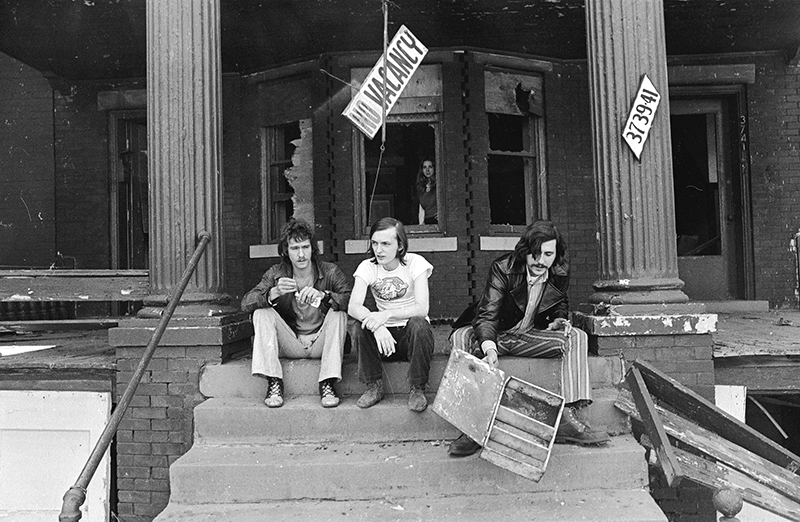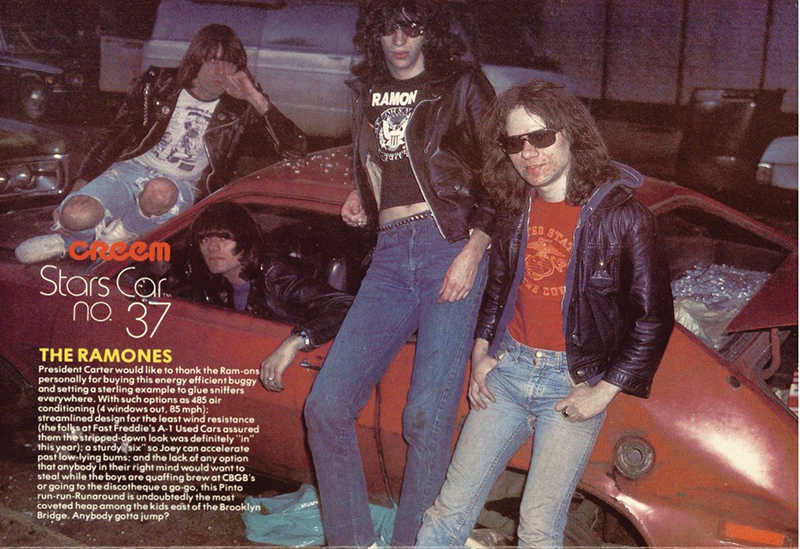
A new documentary on the seminal Detroit rock magazine Creem has its roots in an early ã80s visit to a used bookstore outside Washington, D.C. Director Scott Crawford was 12 years old when he started listening to punk, especially the influential hardcore music coming out of the nationãs capital, mere miles away from his home in Silver Spring, Maryland.
ãObviously, in the early ã80s, mid-ã80s, there was no internet, so the only way to find out information was to read fanzines,ã Crawford says. ãThe ones that I really liked were called Flipside and Maximum Rock ãnã Roll. ãÎ In reading them, there were numerous references to Lester Bangs and to Creem and proto-punk and Iggy [Pop] and the MC5. So, my father and I, one weekend, went to a used bookstore, and in the back of the store, there was a box of old magazines, music magazines, that no one bought, and I said, ãOh, my god, this is Creem.ããÑá
When you cracked open an issue of Creem in the 1970s, you would practically get a contact high. The prose was fueled by weed and speed as well as the most powerful natural drugs: attitude and passion.
ãThose guys would fight about whether the latest Black Sabbath album was any good. And when I say fight, they would come to blows,ã Crawford says. ãTo them, it was worth literally physically fighting over ã thatãs how important music was to them.ã
Zines and Creem inspired Crawford to start his own magazine at age 12. He went on to produce several more professional publications over the years, including Harp and Blurt, both of which featured writers from Creem.

While Creem lasted until 1989, what Crawford discovered in that used bookstore were issues from the 1970s, the height of the magazineãs relevance and irreverence, and that era is the primary focus of his documentary, Creem: Americaãs Only Rock ãnã Roll Magazine. Billing itself as such as a rebuke to Rolling Stone, which had also covered politics alongside its mainstream-friendly music coverage, Creem magazine was an extension of the then-new ã and often gonzo ã journalism of Tom Wolfe, Hunter S. Thompson, Truman Capote, and others.
The idea for Creem arose in March 1969 when Tony Reay, an employee of Barry Kramerãs Mixed Media head shop and bookstore, published the first issue out of his Gladstone Street apartment. (The mag was named Creem because Cream was Reayãs favorite band ã and it was the magãs first of many snide shots at Rolling Stone.)
When the first issue sold out, Kramer offered to back the magazine financially, and they started producing it in the building that housed his Full Circle record shop at 4860 Cass Ave. Reay left a short time later because he wanted to keep Creem focused on blues-based acts. Enter Dave Marsh, a salty 19-year-old Wayne State University student who was the perfect foil for the combative Kramer. Marshãs pugnacious personality came to define the magazine for the next decade, even after he left for Rolling Stone in 1975.
As Creem took off, the mag moved into Kramerãs building at 3729 Cass Ave. and became a gathering spot and crash pad for bands and countercultural types. The star writer was Lester Bangs, a man who wielded insults and praise like a machete, his passion for rock ãnã roll as fervent as his desire to offend.
The documentary covers the publicationãs edgy legacy, but it also focuses on the writers and editors ã all seemingly blessed with enormous personalities ã who gave the magazine its vehement voice. Creemãs immature humor was aimed at teenage dudes, and it may have seemed like it was run by a misogynistic boysã club. For instance, a review of The Runawaysã second album, Queens of Noise, is highlighted in the documentary, and the write-up is so cruel and sexist that itãs amazing the writer even conjured the vile thoughts in his brain, let alone printed them in a magazine. (In the film, Crawford gives The Runawaysã lead singer, Joan Jett, the last word on the brutal review.)
But many of the magãs surliest jokes were written by Creemãs female staffers, such as Jaan Uhelszki, one of the filmãs most prominent talking heads. ãIt was the ã70s, so sue me,ã she says in the film.
ãI really wanted to explore the womenãs roles [at Creem] because I canãt think of another magazine at that point that had as many women writers involved,ã Crawford says. ãAnd it was an interesting juxtaposition with this politically incorrect magazine ãÎ basically written for ãÎ young boys, teen men ãÎ but with a ton of women writers. ãÎ How do those two things reconcile themselves?ã
Uhelszki also co-wrote and co-produced the documentary with Crawford and J.J. Kramer, Barry Kramerãs son, who lost his troubled father in 1981 when he was just 4.
ãTo do the story justice and to do it honestly, I asked JJ Kramer very early on whatãs off-limits. And he said, ãNothing. Nothingãs off-limits.ã And I said, ãOK, because this really needs to be a warts-and-all kind of film.ã And he was completely on board,ã Crawford says. ãThere are things in there that ãÎ were uncomfortable ãÎ and to his credit and to his motherãs credit, they allowed it.ã
JJãs mom and Kramerãs widow, Connie, is another important voice in the film because she was there for all of the madness and also had her own drug demons to beat. Other famous folks giving testimonials to Creemãs influence include REMãs Michael Stipe, Metallicaãs Kirk Hammett, Kissã Gene Simmons and Paul Stanley, film director Cameron Crowe, and MC5 guitarist Wayne Kramer, who also provided music for the filmãs soundtrack.

Celebrities with local ties also appear in the documentary, including Chelseaãs Jeff Daniels and Bloomfield Hills native and Red Hot Chili Peppers drummer Chad Smith, who tells a funny tale accompanied by animated visuals of running into Alice Cooper after riding his bike to Creemãs offices in Birmingham ã the magazineãs final Michigan home after a two-year communal experiment in Walled Lake, where the whole staff lived together on a farm in the middle of nowhere.
But former editor Marsh, with his acerbic, deadpan wit and dagger-like eyes, helps tie all the voices together with his firsthand accounts of working and fighting and making up with Kramer and Bangs. The three of them were like the core members of a really great and totally dysfunctional band.
Thatãs why even with the documentaryãs deep dive into the personal lives of those who created the magazine, Crawford says he always made sure the film came back to what this collection of oddballs and outcasts created together: ãIt always had to come back to Creem.ã
Creem: Americaãs Only Rock ãnã Roll Magazine, which opened the 2019 Freep Film Festival,
returns to theaters in August before moving to streaming, on-demand, and DVD.
|
| ä» |
|










